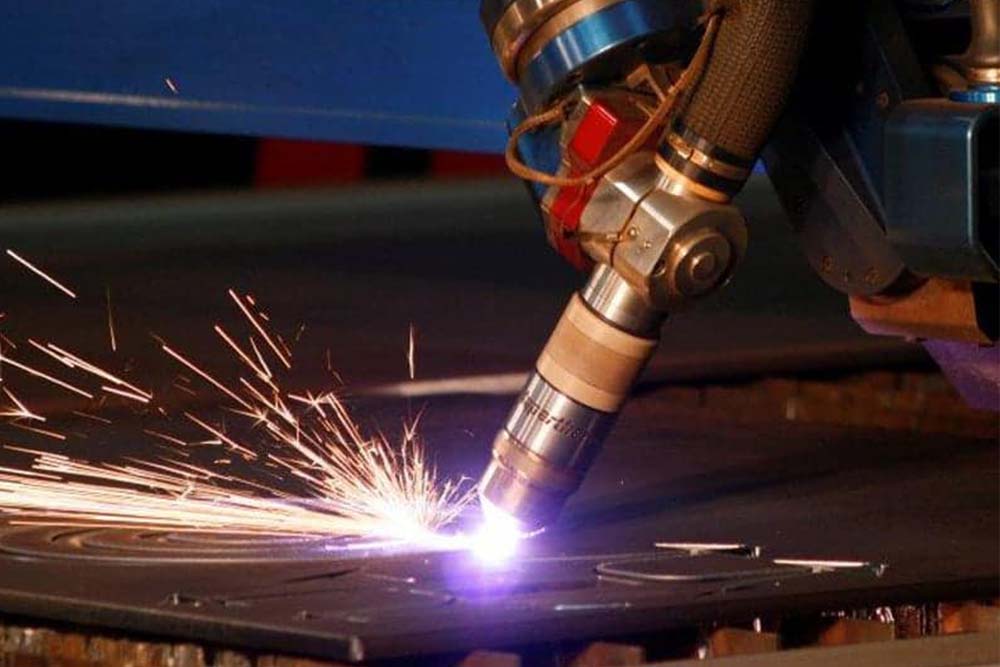Tilt overtravel – where a plasma cutting machine’s bevel head goes beyond 45.7 degrees – is a fairly common issue that, fortunately, is easy to correct.
Tilt overtravel rarely occurs when a machine is running a program. Usually, it happens during a new installation or between uses.
The maximum angle that the tilt axis can reach is 45 degrees. What happens is the machine homes the bevel head and as it’s homing the XYZ and AB axes, the torch breakaway magnets will actually break away, causing the torch to become stuck in place. In the case of a new installation, the user needs to pull more torch leads out, increasing slack.
Between operations, the best solution is to perform a bevel/torch calibration. In plasma cutting systems from AKS Cutting Systems, the homing process is performed daily, if not more often. One homing procedure homes the XYZ axis, while the bevel homing procedure homes the AB axis (the tilt/rotate axis).
When the AB axis is homed, the machine pitches the torch to its limits and then comes back to what it thinks is 90 degrees based on the last bevel calibration. If the machine is calibrated to an uneven plate, it will end up pitching more than 45 degrees.
The XYZ axis is accurately set to zero each time the cutting machine is turned on. However, this can change over time as the machine moves, accidentally adjusting the 3D space without the operator realizing it.
AKS Cutting Systems machines also feature switches to guard against overtravel. The plasma cutting machine operates until it touches these switches, then the switch sends voltage to the drive and the torch assembly moves back into place to the same “reference location” every time.
Other things to note
- When beveling thick steel, if tilt overtravel occurs it may cause damage over time. Operators should check the shield to make sure it hasn’t melted, since the torch could sit in the cut in some situations.
- In the case of rotate overtravel, the operator simply needs to hit the emergency stop and then move the machine by hand.
- Limit switches are designed to keep the motors from driving too far, or doing damage, should settings not be correct or if something goes wrong. When the limit switch is activated, it can shut off the torch and stop the motors to prevent damage to the components.
